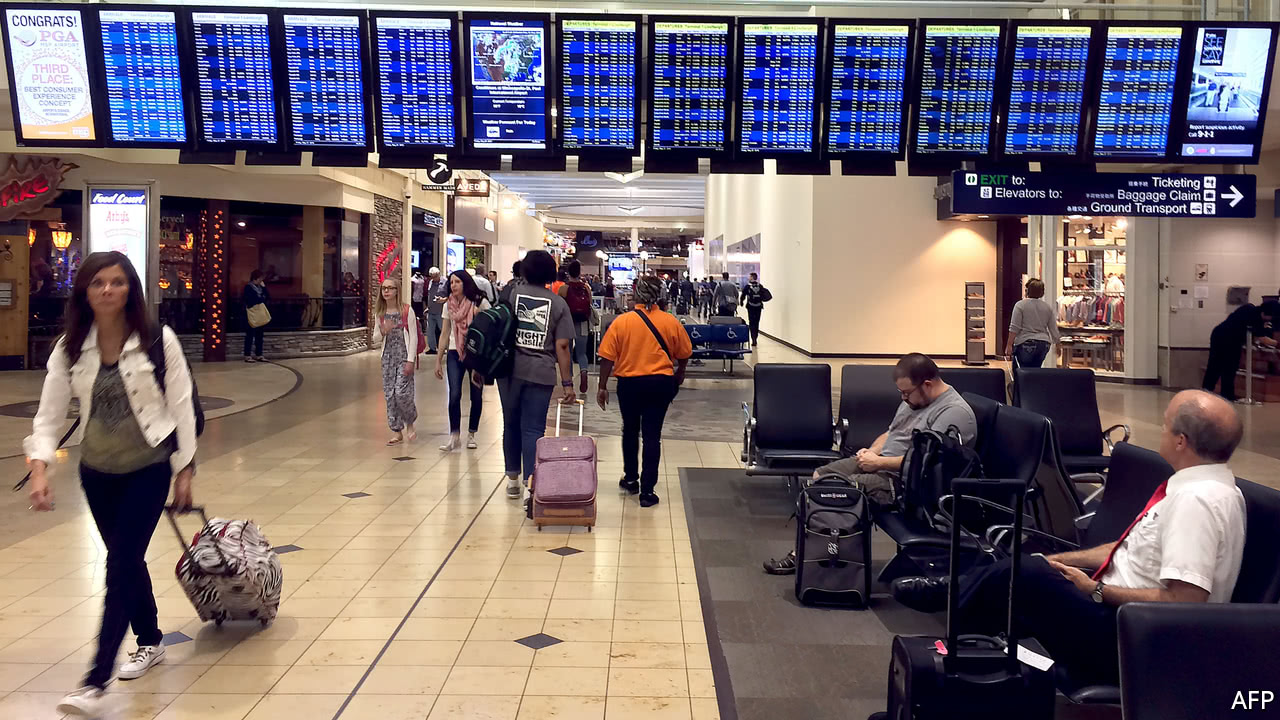
TWO more airports have joined Abu Dhabi in having a laptop ban lifted. On July 5th passengers flying from Dubai or Istanbul to America were told that they will once more be allowed to take large electronic devices into plane cabins, rather than having to stow them in the hold, which they have been required to do since March. That will come as a relief to passengers of Emirates, Turkish Airlines and Etihad who have been forced to fly without their laptops and tablets. It follows a change of heart by John Kelly, America’s homeland security secretary. On July 28th, Mr Kelly’s department decided again to trust foreign airports with screening laptops for hidden explosives, so long as they upgraded security. Other airports affected by the ban are expected to pass muster in the coming days and weeks.
That is good news. But America would do well to get its own house in order as well. Fox 9 reports that in a recent test at Minneapolis-St Paul airport, actors managed to smuggle illicit items past security officials 94% of the time. Sources told the channel that these included explosives, fake weapons and drugs. Fox 9 writes that “last week, what is known as the ‘Red Team’, in town from Washington, DC, posed as passengers and attempted to sneak items through security that should easily be caught. In [17 out of 18] cases they succeeded in getting the banned items through.”
-
Screeners at Minneapolis airport are reported to have a 94% failure rate
-
Islamic State nears its end
-
Immersive experiences, the future of philanthropy
-
A spat about seafood shows the compromises that Brexit will force
-
Obituary: Simone Veil died on June 30th
-
Podcast: Vorsprung durch Angst
A wag might suggest that flyers boarding at Minneapolis should now be forced to stow laptops and iPads in the hold until security at the airport improves. Having said that, a wag might also point out that a 94% failure rate does, in fact, represent progress. In 2015, in nationwide tests, undercover TSA staff managed to smuggle weapons through airport security 96% of the time.
That failure cost Melvin Carraway, the acting administrator of the agency, his job. One screener apparently missed a fake bomb that had been strapped to an agent’s back, despite patting him down. His replacement, Peter Neffenger, promised to bridge the security gaps. But those changes do not appear to have borne fruit, at least in the case of Minneapolis if the Fox 9 report is correct. (Mr Neffenger left office with the arrival of the Trump administration. It will be up to his successor, Huban Gowadia, to wear the hairshirt this time around, should she be so inclined.)
In 2016, the TSA caught 3,391 real-life passengers trying to smuggle illicit weapons onto American planes, a big increase on previous years (see chart). The troubling, unknowable, question is whether that is a result of better screening or if Minneapolis is typical and agents are only uncovering the tip of a very large iceberg.
The TSA is unwilling to comment on the latest reports. It says it does “not confirm or deny the results of internal tests and condemns the release of any information that could compromise our nation’s security”. That is understandable: it is better that terrorists are unaware how easy it might be to dupe screeners. But then again transparency is probably the best way to ensure that procedures are tightened.
Source: economist
Screeners at Minneapolis airport are reported to have a 94% failure rate